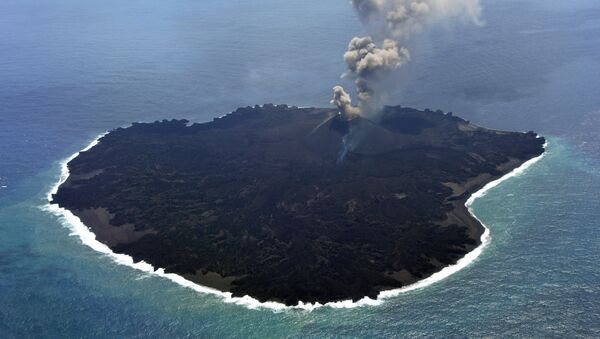Scientists say that the newly created Nishinoshima island in the Ogasawara island chain off Japan may someday be turned into a full-blown ecosystem.
According Japan's Coast Guard, the new island has an area of around 2.46 square kilometers, approximately the size of 345 football pitches. Right now, it mainly consists of bare rock that was formed from cooling lava after a volcanic eruption in November 2013.
However, the hope is that plants and animals will eventually appear on what scientists describe as a "natural laboratory" located in the Pacific Ocean.
Dr.Naoki Kachi, professor and leader of Tokyo Metropolitan University's Ogasawara Research Committee, remained upbeat on the future of the island.
"We biologists are very much focusing on the new island because we'll be able to observe the starting point of evolutionary processes," he was quoted by the AFP news agency as saying.
He predicted that after the volcanic activity calms down, "what will probably happen first will be the arrival of plants brought by ocean currents and attached to birds' feet".
Current situation at #Nishinoshima #volcano #Japan Photo: Japan Coast Guard pic.twitter.com/D7by8xpxsa
— Roberto C. Lopez (@Bromotengger) 3 мая 2015
Kachi referred to seabirds, who could eventually set up home on the island after using it as a temporary resting place.
"I am most interested in the effects of birds on the plants' ecosystem — how their bodily wastes-turned-organic fertilizers enrich the vegetation and how their activities disturb it," Kachi said.
As for the new Nishinoshima, it has so far only been monitored from the air, and its maximum height was estimated at 110 meters above the sea level in late December 2014. Meanwhile, Nishinoshima continues to spew lava, with scientists saying that and it is not clear when the process will stop.




